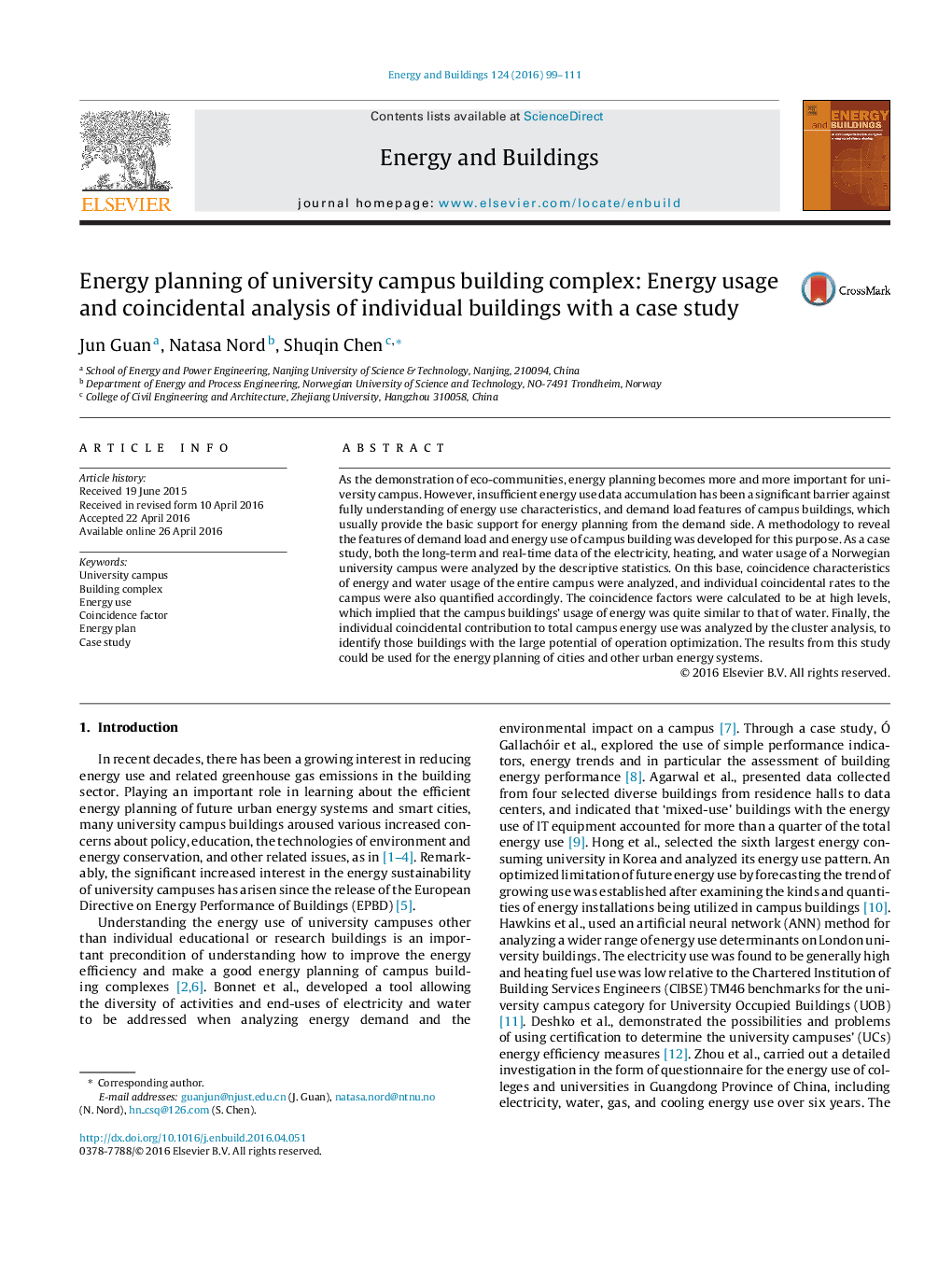| کد مقاله | کد نشریه | سال انتشار | مقاله انگلیسی | نسخه تمام متن |
|---|---|---|---|---|
| 262092 | 504010 | 2016 | 13 صفحه PDF | دانلود رایگان |
• Electricity and water uses consistently kept few changes in the less occupancy time.
• The baseline of electricity and water uses at less occupancy can be obtained so as to maintain basic operation of this campus.
• The maximums of annual coincidence factors were averaged to be 78.8% for electricity, 79.4% for heating, and 40.3% for fresh water use.
• Those buildings with large potential of operation optimization were identified for better understanding the energy planning of cities and other urban energy systems.
As the demonstration of eco-communities, energy planning becomes more and more important for university campus. However, insufficient energy use data accumulation has been a significant barrier against fully understanding of energy use characteristics, and demand load features of campus buildings, which usually provide the basic support for energy planning from the demand side. A methodology to reveal the features of demand load and energy use of campus building was developed for this purpose. As a case study, both the long-term and real-time data of the electricity, heating, and water usage of a Norwegian university campus were analyzed by the descriptive statistics. On this base, coincidence characteristics of energy and water usage of the entire campus were analyzed, and individual coincidental rates to the campus were also quantified accordingly. The coincidence factors were calculated to be at high levels, which implied that the campus buildings’ usage of energy was quite similar to that of water. Finally, the individual coincidental contribution to total campus energy use was analyzed by the cluster analysis, to identify those buildings with the large potential of operation optimization. The results from this study could be used for the energy planning of cities and other urban energy systems.
Journal: Energy and Buildings - Volume 124, 15 July 2016, Pages 99–111
